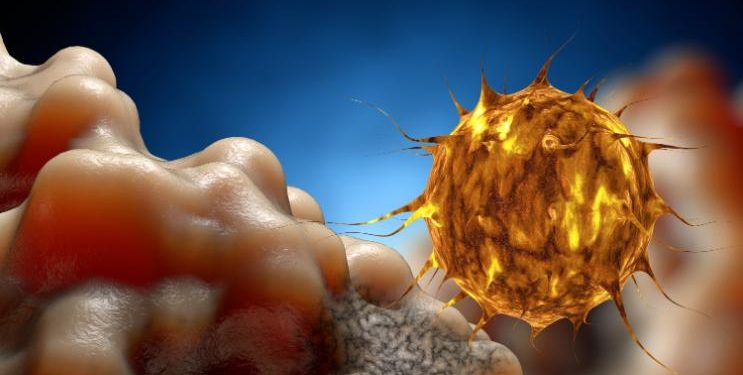Doctors can check for endometrial cancer by asking questions, doing a physical examination and using tests. These include blood tests, an examination of the uterus and cervix (a total hysterectomy and salpingo-oophorectomy) and removing lymph nodes from around the pelvis for testing.
Risk factors raise a woman’s chance of getting cancer, but they don’t cause it. Many women with known risk factors never develop cancer.
Symptoms
Endometrial cancer develops in the cells that line the uterus. The uterus is the pear-shaped organ that holds a fetus during pregnancy. But if cancer cells grow in the lining of the uterus, they can spread to the pelvic tissues and other parts of the body. Symptoms may include pain and bleeding during menstruation, or infertility.
Health care professionals use several tests to find out if you have endometrial cancer. These include a pelvic exam, blood work and imaging tests such as ultrasound. A MRI or CT scan may also be needed. The tests help your doctor determine if the cancer is in the lining of the uterus or has spread to other areas of the body. Your doctor will use this information to decide how to treat you.
If you are at risk for endometrial cancer, you should talk to your doctor about the symptoms you have and when they started. Then you can decide when to see your doctor for a screening visit.
Some women are more likely to get endometrial cancer than others. The chance increases as you get older. It is also higher for women who start menstruating before age 12 or go through menopause later than usual. These conditions expose the uterus to more estrogen hormones, which can cause the lining of the uterus to grow abnormally. A family history of endometrial cancer or a genetic condition such as Lynch syndrome increases the risk, as does being overweight.
If your doctor diagnoses endometrial cancer, you will need to have surgery to remove the uterus and fallopian tubes. If the cancer has spread to other areas of the body, you will need radiation therapy or chemotherapy.
A hysterectomy is the most common treatment for endometrial cancer. It involves removing the uterus and fallopian tubes, as well as the ovaries in women who still have them. People who have a hysterectomy cannot have children. Radiation therapy kills cancer cells and helps the surgery heal. It can also be used to kill cancer cells that remain after surgery. Chemotherapy uses medication to kill cancer cells or stop them from growing.
Diagnosis
The first step in diagnosing endometrial cancer is to talk with your doctor about your symptoms. Your doctor will also ask you questions about your health and your family history. Then your doctor will do a pelvic exam. This includes a speculum exam and an ultrasound to see your uterus, cervix, and the endometrium.
For the diagnosis, your doctor may recommend a blood test or an imaging study. A CT scan or an MRI can help your doctor see the extent of the cancer. These tests can find the size of the tumor and how it has spread, if any. They can also find if it has invaded other parts of your body.
If your doctor thinks you might have endometrial cancer, they may do a biopsy to confirm the diagnosis. They will insert a tool (speculum) into your vagina to open it and remove a sample of the endometrial tissue. Then the doctor will send this sample to a lab for testing. A pathologist will look at the sample under a microscope to check for cancer cells.
A biopsy can be done in your doctor’s office or in a hospital laboratory. Some doctors use a needle to collect the sample, but most use a laparoscope to guide the procedure.
Some types of endometrial cancer can be treated with hormone therapy. Hormone therapy reduces the levels of estrogen in your body. This can cause the cancer cells to die. It might be combined with surgery and radiation therapy in some cases. Your doctor will tell you if this treatment is right for you.
Another way to treat endometrial cancer is with chemotherapy. Chemotherapy uses strong medicines to kill cancer cells and stop them from growing. This type of treatment might be used if your cancer is advanced or when it comes back after hormone therapy.
Some types of endometrial cancer are more likely to spread than others. Your doctor will tell you if your cancer is stage 1, 2, 3, or 4. Stage 1 and 2 tumors are low-risk and don’t usually spread to other parts of the body. But grade 3 tumors are more likely to spread and are more serious.
Treatment
The type of treatment you receive depends on the stage (extent) of your endometrial cancer and other factors, such as your age, whether you want to have children, and whether the cancer has spread beyond the uterus. Your doctor will also look at your family history of certain diseases, and your overall health.
If the cancer is only in the lining of your uterus, surgery to remove it may be enough. If the cancer has spread more widely, hormone therapy and sometimes chemotherapy are used. The cancer cells need to be able to get the hormones estrogen and progesterone from your body in order to grow, so hormone therapy is used to stop these cells from getting the hormones they need. Those with a low-grade endometrial cancer that has progesterone receptors may respond to hormone therapy, but high-grade and those without progesterone or estrogen receptors will not shrink by using hormones alone. In some cases, your doctor might recommend surgery followed by radiation or other types of treatment.
A procedure called a biopsy is done to find out if the cancer has spread within or outside of your uterus. Your doctor will remove a small sample of your uterus tissue and check it under a microscope to look for signs of cancer.
Having any of the following risk factors increases your chance of having endometrial cancer:
Menopause (changes in the female reproductive system) after you have had children. Taking tamoxifen to prevent or treat breast cancer. Having a family history of endometrial cancer in a first-degree relative, such as your mother or sister. Having other gynecological problems such as endometriosis, or polyps in your uterus. Having a hysterectomy in the past for other reasons.
Your doctor will use the results from the tests and procedures to decide on your treatment. Your doctor might be able to tell you how your cancer is likely to behave, but it’s impossible to know how your individual cancer will react. The cancer might return, or it might not, and your treatment might need to be changed.
Prevention
In addition to getting regular annual checkups with your gynecologist, and reporting any unusual vaginal bleeding or symptoms, there are ways you can help prevent endometrial cancer.
You can reduce your risk by being active, maintaining a healthy weight and following a low-fat diet. You should also talk with your doctor about family history. Certain genetic conditions, such as hereditary nonpolyposis colorectal cancer (HNPCC) or Cowden’s syndrome, increase your risk of endometrial cancer.
Having too much estrogen in your body increases your risk of developing endometrial cancer. This is because the cells of your uterus grow and divide more quickly when there is too much estrogen. Certain diseases and disorders can raise your risk of having too much estrogen, such as obesity, diabetes and irregular ovulation patterns, which might occur in polycystic ovary syndrome. Taking hormone therapy medicines that contain estrogen but not progestin after menopause can also raise your risk.
Other things that may increase your risk of endometrial cancer include having more than 10 years of periods, or going through menopause at an older age. Women who never have children also have a higher risk of endometrial cancer, because they have more years of exposure to the estrogen in their endometrium. Pelvic radiation for other types of cancers, such as a uterine sarcoma, can also increase your risk.
Being overweight also increases your risk of endometrial cancer, because too much fat can alter the balance of the hormones in your body. It is especially important to maintain a healthy weight and get regular exercise. This can help lower your blood pressure, which can also lower your risk of having high estrogen levels.









